|
|
|
Sort Order |
|
|
|
Items / Page
|
|
|
|
|
|
|
| Srl | Item |
| 1 |
ID:
143254


|
|
|
|
|
| Summary/Abstract |
There is an enduring consensus about America's role in the world, which is due to the fact that while administrations may change, fundamental U.S. interests have not. These include protecting the U.S. homeland from catastrophic attack, sustaining a global system marked by open lines of communication to facilitate commerce, and preserving regional balances of power. Far from being a reluctant imperialist or hegemon on the offensive, the United States tends to fill security voids when they are created (even if often late to the game) to ensure the international system remains functional. To be sure, future U.S. grand strategy will be global and multilateral, but it will be much more selective than it is today.
|
|
|
|
|
|
|
|
|
|
|
|
|
|
|
|
| 2 |
ID:
126371
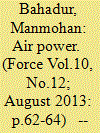

|
|
|
|
|
| Publication |
2012.
|
| Summary/Abstract |
The Indian Air Force (IAF) is into its eighth decade and as it closes in on its centenary, a mere two decades away, many a treatise has been propounded on the challenges ahead for the youngest armed service of independent India. What started as a mere flight of Wapitis at Drigh Road, Karachi, has grown into a potent power projection arm of the state.
The IAF derives its fortitude from its motto, Nabha Sparsham Deeptam (Touch the Sky with Glory). But there is perhaps a limitation in the coining of this motto as there is a hint of conclusiveness in the envelope of operation of Air Power. A more intuitive and farsighted approach may well have resulted in its coining to include space, the final frontier. But is space the final frontier? One better be careful lest a scribe writing about the IAF a few decades from now also questions this writer's perceptive ability!
Limiting the horizon to a manageable timeframe makes the future 'realistically' transparent. So, considering a timespan of 20 years, when the IAF turns 100, let's evaluate how the anticipated threats and challenges are to be addressed based on the IAF doctrine.
|
|
|
|
|
|
|
|
|
|
|
|
|
|
|
|
| 3 |
ID:
124758


|
|
|
|
|
| Publication |
2013.
|
| Summary/Abstract |
Britain's contemporary and future relationship with the British Antarctic Territory and the wider region is the subject matter of this article. In the aftermath of the ill-fated plans for a merger of British Antarctic Survey (BAS) and the National Oceanography Centre, it is timely to ask how the UK projects influence and secures its scientific, resource and strategic interests. The contemporary Antarctic is increasingly characterized by tension over resource management and conservation politics as Antarctic Treaty parties disagree, both in private and public, over the purpose of legal instruments and the regulation of activities such as fishing and marine conservation. While we do not predict the collapse of the Antarctic Treaty System (ATS), our analysis suggests that the effectiveness and legitimacy of the ATS is increasingly under challenge. The United Kingdom's position as a claimant state and original signatory to the Antarctic Treaty is complicated by the presence of counter-claimants (Argentina and Chile) and a wider preoccupation with other overseas territories, such as South Georgia and South Sandwich Islands and the Falkland Islands. Polar science, carried out by BAS and other British agents, remains critical not only for maintaining the UK's 'soft power' but also increasingly for cementing a 'strategic presence' in the Antarctic. The article ends with a cautionary note: scientific excellence is no longer sufficient to guarantee geopolitical/strategic interests and there is growing evidence that claimant and non-claimant states alike are no longer regarding Antarctica as an area that will remain free of intensifying and diversifying resource exploitation.
|
|
|
|
|
|
|
|
|
|
|
|
|
|
|
|
| 4 |
ID:
125637
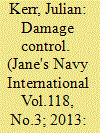

|
|
|
|
|
| Publication |
2013.
|
| Summary/Abstract |
The troubled service history of Australia's Collins-Class submarine is well documented, but the scale of the sustainability issues that have continued to dog the class has now been brought out in the open as never before. Julian Kerr examines the finding and recommendations of the Coles report
|
|
|
|
|
|
|
|
|
|
|
|
|
|
|
|
| 5 |
ID:
137931
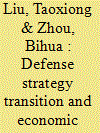

|
|
|
|
|
| Summary/Abstract |
This paper develops a growth model for a country under a Hobbesian environment with international conflicts where national defense is the only way to prevent external predation. Different defense strategies result in different growth paths. The long-run growth path is determined by the equilibrium of a dynamic game with three players: the external predator, the government, and the family. The equilibrium growth path can have different phases: submissive equilibrium, tolerant equilibrium, and complete protection equilibrium. Sustainable growth will endogenously induce an adjustment of the defense strategies. As the economy keeps growing, complete protection will eventually be preferred. The optimal growth path prefers to compress the length of the transitional period between incomplete protection and complete protection. Some interesting features of the transitional dynamics are exhibited by a control model with discontinuity.
|
|
|
|
|
|
|
|
|
|
|
|
|
|
|
|
| 6 |
ID:
128273
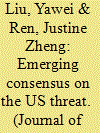

|
|
|
|
|
| Publication |
2014.
|
| Summary/Abstract |
Though the PLA elite perceptions of the United States have fluctuated over time, there has been some regularity in the evolution of their perceptions. Comparing the dominant perceptions of the United States among different generations of Chinese military elites in the PRC, we find that the PLA elite perceptions of US intentions have been foremost influenced by China's strategic interest in a certain period, rather than the level and intensity of bilateral exchanges at the time. Using the case of US arms sales to Taiwan and the case of the South China Sea and the Diaoyu Islands, we try to assess how consistent and persistent PLA elite perceptions of the US have been in recent years. While we agree that these outspoken military men cannot be taken on the surface as indicative of China's national policies, we will also point out several important dimensions that are likely to allow the PLA to play a more influential role in setting the agenda for China's strategic interest in the era of Xi Jinping.
|
|
|
|
|
|
|
|
|
|
|
|
|
|
|
|
| 7 |
ID:
126381
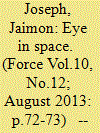

|
|
|
|
|
| Publication |
2012.
|
| Summary/Abstract |
Normally, it takes 20-32 seconds for a state-of-the-art GPS/GLONASS receiver to get a lock on satellites and plot location co-ordinates. Dr Vyasaraj Guru Rao, a specialist with 17 years of experience in Global Navigation Satellite System (GNSS) navigation technologies has proposed a method by means of which one is able to obtain position in eight seconds, which he says can be adopted as a part of the Indian Regional Navigation Satellite system (IRNSS) programme.
|
|
|
|
|
|
|
|
|
|
|
|
|
|
|
|
| 8 |
ID:
126752
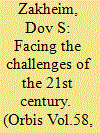

|
|
|
|
|
| Publication |
2013.
|
| Summary/Abstract |
America's strategy has become increasingly budget-driven in the face of ongoing cuts, culminating in the sequester. As a result, fewer funds are, and will be, available for critical operations, notably exercises and training with foreign forces that are the key both to strengthening alliances and partnerships and to deterring current and potential adversaries. That Washington continues to revise its defense strategy virtually on an annual basis has further undermined its credibility worldwide. Given its long-standing global interests, and uncertainty regarding when and where it might again have to commit forces to defend them, the United States must reinvigorate its efforts to streamline the Defense Department so as to maintain its global posture in the face of budget pressures. Measures to improve defense efficiency include reductions in the civilian and contractor work forces, overhaul of the military medical and retirement systems, and repeal of anachronistic laws that foster waste in defense acquisition.
|
|
|
|
|
|
|
|
|
|
|
|
|
|
|
|
| 9 |
ID:
002486


|
|
|
|
|
| Publication |
New York, Crane, Russak and company, 1979.
|
| Description |
xviii, 137p.
|
| Standard Number |
084481332X
|
|
|
|
|
|
|
|
|
|
|
|
Copies: C:1/I:0,R:0,Q:0
Circulation
| Accession# | Call# | Current Location | Status | Policy | Location |
| 033960 | 355.03/NIT 033960 | Main | On Shelf | General | |
|
|
|
|
| 10 |
ID:
126373
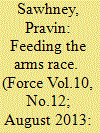

|
|
|
|
|
| Publication |
2012.
|
| Summary/Abstract |
In numerous interviews meant to mark his presence, the new Defence Research and Development Organisation (DRDO) head, Avinash Chander, has said that in his three-year term, he intends to induct both the Agni-4 (3,000km) and Agni-5 (5,000km) ballistic missiles into service. He will also place Agni-6 with 6,000km (not yet sanctioned by the government) on track for its first test-firing in 2017. The importance of Agni-6, according to him, is that it would carry Multiple Independently Targetable Re-entry Vehicles (MIRVs), which each warhead striking a different target.
|
|
|
|
|
|
|
|
|
|
|
|
|
|
|
|
| 11 |
ID:
140563


|
|
|
|
|
| Summary/Abstract |
AirSea Battle (ASB) has generated significant publicity, controversy, and debate among scholars, analysts, commentators, and observers of US defense strategy. However, a research gap exists concerning formal analysis of the impact of the operational concept on the relationship between the US Air Force (USAF) and the US Navy (USN). The impact of the ASB operational concept on the USAF–USN relationship is examined across the issue areas of strategy, budgets, weapons procurement, and training. These four issue areas represent important areas of historical conflict and competition between the Air Force and Navy. The conclusion is that ASB is ushering in a new era of Air Force–Navy partnership that advances the inter-service dynamic from “jointness” toward integration. The emergent USAF–USN partnership therefore represents a significant development in US defense politics and defense strategy.
|
|
|
|
|
|
|
|
|
|
|
|
|
|
|
|
| 12 |
ID:
128258
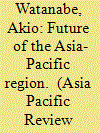

|
|
|
|
|
| Publication |
2013.
|
| Summary/Abstract |
This article discusses the origin and significance of the designation of the area surrounding Japan as the Asia-Pacific region. It then outlines the members of the region and the various organizations in which they participate. After describing the economic and cultural achievements to date, the article points out the issues challenging the Asia-Pacific region and encourages leaders in this "security complex" to remove obstacles to peace and security going forward in the twenty-first century.
|
|
|
|
|
|
|
|
|
|
|
|
|
|
|
|
| 13 |
ID:
181661
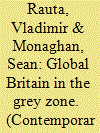

|
|
|
|
|
| Summary/Abstract |
The United Kingdom’s integrated defense and security review put “grey zone” or “hybrid” challenges at the center of national security and defense strategy. The United Kingdom is not alone: The security and defense policies of NATO, the European Union, and several other countries (including the United States, France, Germany, and Australia) have taken a hybrid-turn in recent years. This article attempts to move the hybrid debate toward more fertile ground for international policymakers and scholars by advocating a simple distinction between threats and warfare. The United Kingdom’s attempts to grapple with its own hybrid policy offer a national case study in closing the gap between rhetoric and practice, or stagecraft and statecraft, before an avenue of moving forward is proposed—informally, through a series of questions, puzzles, and lessons from the British experience—to help international policy and research communities align their efforts to address their own stagecraft-statecraft dichotomies.
|
|
|
|
|
|
|
|
|
|
|
|
|
|
|
|
| 14 |
ID:
116067


|
|
|
|
|
| Publication |
2012.
|
| Summary/Abstract |
Facing nearly half a billion dollars in spending cuts over the next five years, US defense planners and strategists must simultaneously rebuild a war-weary Army weakened from over a decade of war, build new sea and air capabilities for the Pacific theater, and reduce manpower, procurement, and contractor budgets while promoting innovation. The US defense department is embarking on what may be the most sweeping period of defense transformation in recent memory. This article reviews the history of American defense transformation, focusing on an important but largely overlooked period of military innovation that began in the shadow of Vietnam and ended with troops fighting through blinding sandstorms at night on the road to Baghdad. The multifaceted transformation strategy conceived in the 1970s paved the way for a military revolution in the 1990s and enabled unprecedented battlefield adaptation in the 2000s. After reviewing the revolutionary changes that led to American dominance in conventional warfare in the 1990s, the article examines US transformation policies in the 2000s to inform defense strategy and planning efforts in the 2010s.
|
|
|
|
|
|
|
|
|
|
|
|
|
|
|
|
| 15 |
ID:
125374
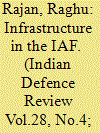

|
|
|
|
|
| Publication |
2013.
|
| Summary/Abstract |
Due to its long gestation period, infrastructure needs advance and integrated planning amongst the three services and civil agencies to ensure that the end result is cost-effective without duplication of effort and investment. Some of the measures suggested may be somewhat radical, but after over six decades since Independence, the nation expects results. A sound and secure infrastructure will enable the IAF to undertake its tasks in the most effective manner and thus become a force multiplier in the days to come.
|
|
|
|
|
|
|
|
|
|
|
|
|
|
|
|
| 16 |
ID:
103997
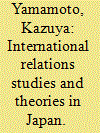

|
|
|
|
|
| Publication |
2011.
|
| Summary/Abstract |
A common view of Japan's International Relations (IR) studies in the post-World War II period is that they are characterized by pacifism and historical approaches. This paper argues that while pacifism has continued to serve as the basis of them, the approaches adopted by researchers have become increasingly diversified. Specifically, although the main issues for Japanese IR studies in the postwar period (i.e. defense strategy, world political economy, and global issues) have been consistently addressed by researchers on the basis of pacifism, the theoretical orientation of researchers has continually become stronger. Finally, this paper argues that both changing and continuous characteristics of IR studies in Japan have been supported by global developments, and concludes that this trend will continue into the near future.
|
|
|
|
|
|
|
|
|
|
|
|
|
|
|
|
| 17 |
ID:
155561
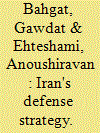

|
|
|
| 18 |
ID:
170242
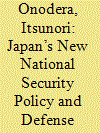

|
|
|
|
|
| Summary/Abstract |
The security environment in Northeast Asia is changing dramatically and rapidly. Even more concerning than the North Korea issue is China’s strengthening of military power and activity. The author, a member of the House of Representatives of the National Diet of Japan and two-term Minister of Defense until October 2018, discusses recent developments in the region in terms of new methods of warfare, competition for technological hegemony, and Japan’s defense program. The article analyzes key relationships in the region, including the US-China relationship, the Japan-China relationship, and the Japan-Korea relationship and provides the author’s views of how best to manage these relationships in the mid- to long-term. This article is based on remarks delivered on March 6, 2019 for US–Japan LINK, a non-profit organization based in Tokyo.
|
|
|
|
|
|
|
|
|
|
|
|
|
|
|
|
| 19 |
ID:
126857
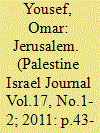

|
|
|
|
|
| Publication |
2011.
|
| Summary/Abstract |
After making sure that all those in your car have either Jerusalem IDs or foreign passports, you may have to ask your cousin who came to visit you from Abu-Dis to take a walk before you start the engine. While cursing the Israeli authorities who put you in such an extremely embarrassing situation, you try apologetically to explain to him which roads he should sneak through to avoid the lurking Israeli flying checkpoints.
|
|
|
|
|
|
|
|
|
|
|
|
|
|
|
|
| 20 |
ID:
131362


|
|
|
|
|
| Publication |
2014.
|
| Summary/Abstract |
In March 2011, President Barack Obama ordered US air and naval forces to commence Operation Odyssey Dawn in Libya to impose a no-fly zone. The decision by the Obama Administration to intervene in a limited and supporting role in Libya is an important development in US foreign policy. Operation Odyssey Dawn presents scholars with a valuable opportunity to analyze and explore how US foreign policy is made and what roles domestic politics and elite perceptions play in decisions to use force. The author argues that neoclassical realism is a useful and compelling theoretic framework with which to analyze Operation Odyssey Dawn. While the Administration intervened in response to perceived external-level threats to US national interests, salient intervening domestic-level variables and elite perceptions shaped and guided the tenor and scope of the operation.
|
|
|
|
|
|
|
|
|
|
|
|
|
|
|
|
|
|
|
|
|